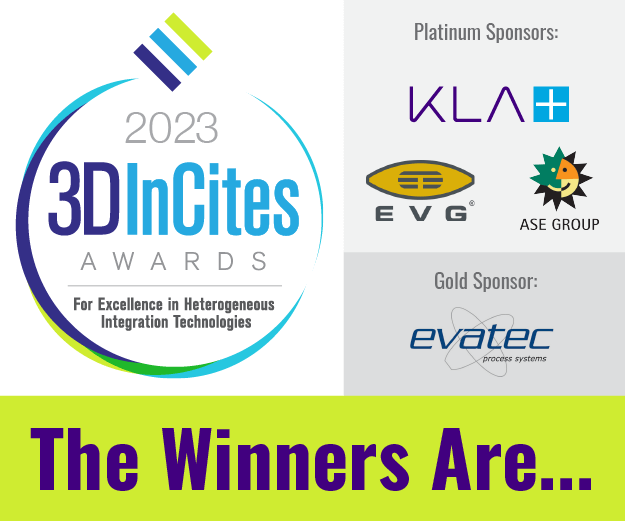Day 1
In place of the SEMICON West in July, SEMI presented a virtual event titled Innovation for a Transforming World. The event format was a bit different than the way SEMI normally runs a conference. Historically, SEMI leans heavily on the semiconductor infrastructure for presentations with a keynote from an outside speaker or two to help set the tone. Not so this time: day one featured speakers you might not normally hear at a SEMI conference. While SEMI titled the conference Innovation in a Transforming World, day one was a strategic management seminar on how to manage the transforming change that is rapidly taking place around us. If you’re in management, I would highly recommend carving out some time to listen to this and inviting any one of the speakers to talk to your management team.
There were several common themes. Change is hard and can create fear, but innovation is driven by change. Work from the edge, or understand where the edge currently is, as that will help lead to the future. The edge being the edge of your current business practices. Understand how to use customer data to drive the future experience, and communicate consistently with your team, and customers.
Digital Disruption
The conference led off with Charlene Li, who is a senior fellow at Altimeter. Li set the tone for the day by presenting on Dealing with Digital Disruption, Leading in Times of Chaos and Crisis. The discussion was a short course on how to lead your company in a time digital transformation. Li discussed that disruption is an opportunity for change and that disruption is born out of necessity. Many companies are born during downturns or times of crisis.
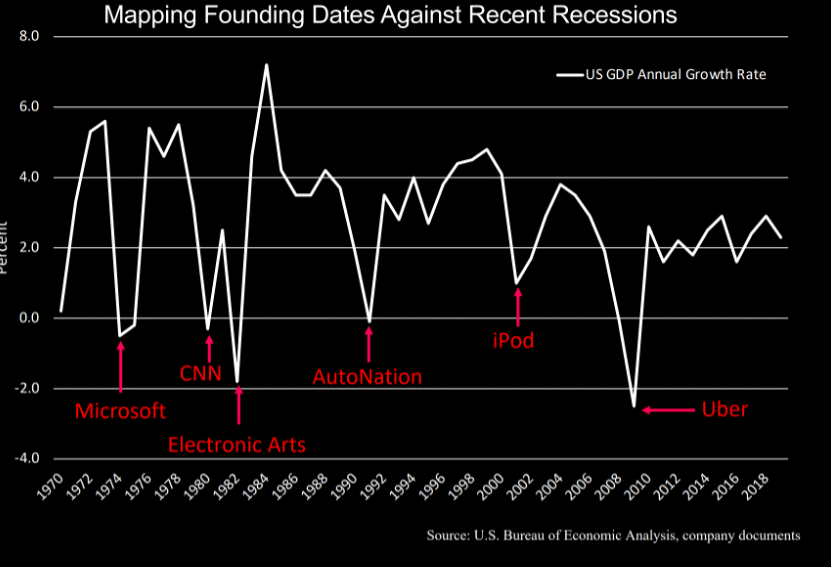
Figure 1 from Li’s talk demonstrates that many successful companies or products were formed at the bottom of a recession. Li was quick to point out that while digital technology plays a role, it’s really about people and transformation, or change. as another speaker will discuss later.
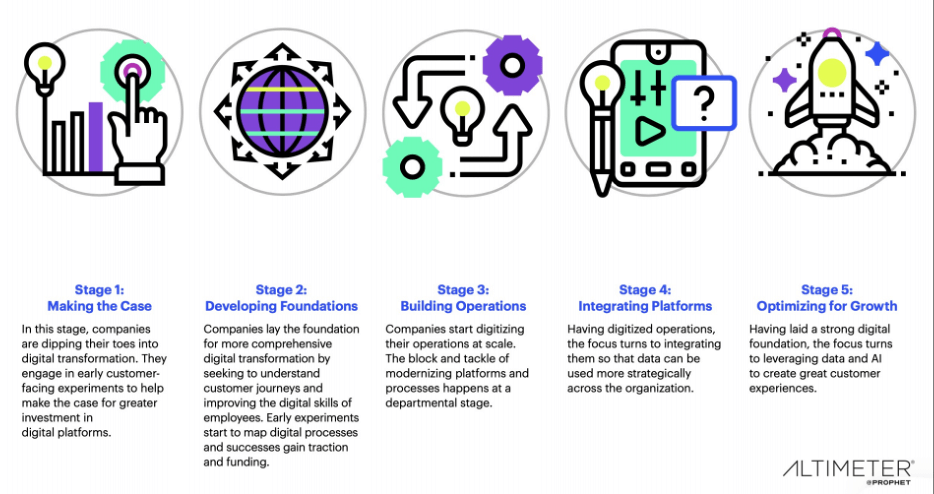
Li used the company, Adobe, as an example for the digital transformation; how management knew they needed to change, but it was going to be painful and costly. Adobe management rose to the challenge and made the case to clients, employees, and Wall Street; all of who were against the transformation. Adobe developed the foundation, executed the plan, created the operation, integrated the platform, and came out of the transformation stronger than before they went into the changes. Li pointed out that you cannot be blinded by your beautiful current customer, you need to look forward and use empathy maps to define and describe future customers.
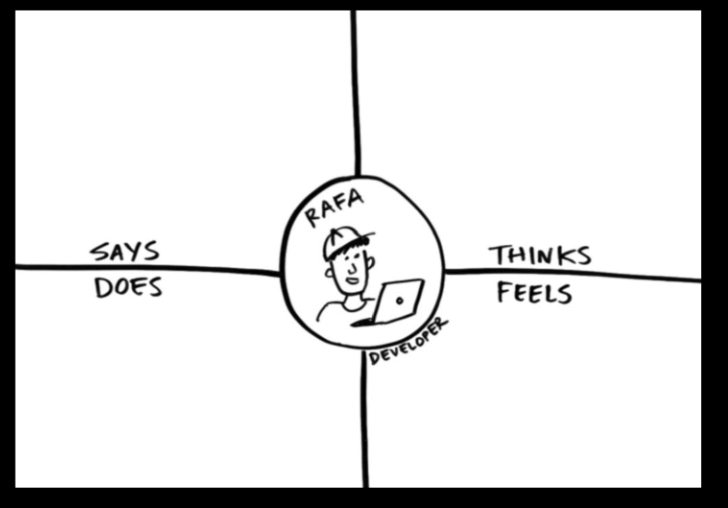
Figure 3: Use empathy maps to describe future customers. (Source Charlene Li SEMI Innovation for a Transforming World)
Li described how to lead a transformation. She said changing a company’s beliefs and driving culture is key to promoting change. Disruption needs to be a movement, and management needs to communicate values and beliefs constantly to drive culture and success. “Innovation: we want it to be easy,” she said. “Innovation worth fighting for will be disruptive!” Li closed the Q&A with three key points:
- Carve out the path or strategy.
- Create the culture, culture is the engine that will drive change.
- Communicate over, over, and over.
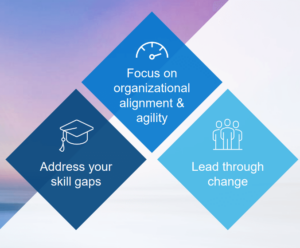
Cheryl Cook, Senior Vice President, Global Partner Marketing of Dell Technologies discussed “Digital Leadership-Embracing the Buying Evolution”. She discussed three key points that Dell and others can focus on to help address the customer experience (Figure 4).
- Focus on organization alignment and agility
- Address your skill gaps
- Lead through change.
Cook said that according to Gartner, by 2025 80% of B2B interactions between suppliers and buyers will occur in digital channels. Cook explained that your success will be tied to meeting digital expectations. Essentially this means you need to get your digital house in order.
To improve your customers’ digital experience, you need to close your employee’s skill gap by training and anticipating the skills they will need for the future. To more effectively align your organization, own the full customer experience by collectively following intent data, encourage cross-collaboration, and embrace the human aspects of work from anywhere. Lastly lead through change by keeping it simple, foster and environment of trust, and test and learn.
Seth Dobrin, Global Chief AI officer spoke about Trustworthy AI: Reinventing the Core of Today Enterprise by a Human-Centered AI Strategy. He pointed out that trust is critical for AI, and to achieve that trust a human-centric approach is needed for AI development. Algorithm developers need to understand the outcome first and consider the end-user.
When I heard this point, I had to think of another key business point promoted by Stephen Covey. “Begin with the End in Mind”. Many IoT talks also make the same point. The stakeholder needs to be on board to help define the outcome, otherwise, you are doomed to failure. Dobrin believes that if you have a diverse team, which he has built, that understands the who, what, when, why, and how, the team will be able to create trustworthy AI that will be less biased.
John Hagel III, Beyond our Edge, addressed The Challenge of Change. Hagal proposed that we are currently at the start of a big shift, from which there will be many consequences. One of the sources of the big shift is the increasing competitiveness that is increasing pressure, which drives fear. Hagel surmised that fear causes us to focus on the present and can create a win/lose situation. When in this short-term win/lose situation, management can create what is called a burning platform, which creates more fear.
Hagel suggested several options for management to consider. He first discussed the Zoom In/Zoom Out Strategy, where companies zoom out 10-20 years, and then zoom in 3-6 months, and set up strategies that will have the greatest impact in that short period of time to eventually reach the zoom out strategies they have set.
Hagel explained that emotion is more important than strategy, which speaks to Li’s point about creating a culture and a movement within a company to achieve goals. Hagel said he felt it was important for a company to have a corporate narrative that was open-ended that enabled people to take action to achieve opportunity.
Hagel recommends that management create learning platforms, which he defined as groups of 5-15 people driven to learn faster together. These diverse groups would be working towards a shared outcome. This discussion reminded me of the book, The Wisdom of Teams, where teams are used to help drive a company’s success.
Hagel suggested that management move from an environment of fear to one of excitement; although, he didn’t elaborate on how. Hagel also discussed working on the edge and working to move the company from the core to the edge, as the edge is where the company’s future direction will be.
The day was closed with Bindiya Vakil the CEO and co-founder of Resilinc speaking on Managing Supply Chains through a Pandemic, Chip Shortage and More. Vakil started out by comparing procurement to whack-a-mole, solving one emergency at a time. He pointed out that the supply chain and supply chain problems have been with us for a long time (Figure 5).
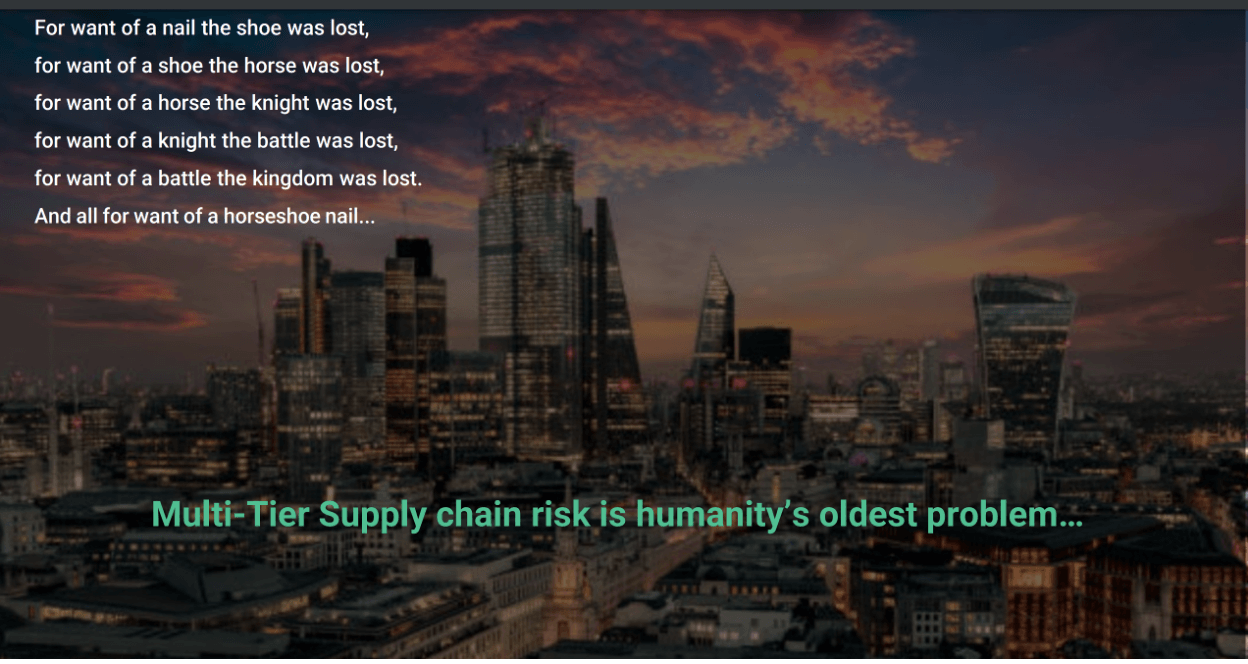
Vakil then discussed some of the issues the semiconductor supply chain has experienced over time (Figure 6).
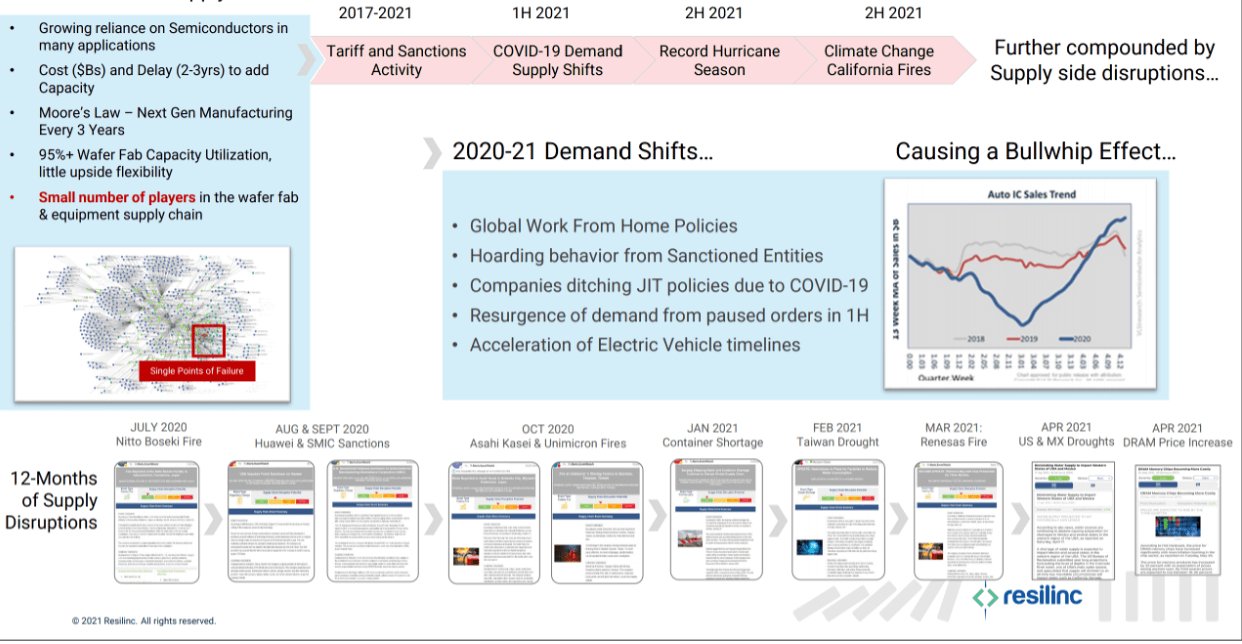
It almost sounded like the 12th century, when fires, famine, and drought wreaked havoc on society! Over time, the semiconductor industry has had its significant share of fires at critical material suppliers and fabs and has always recovered. Water is a key component of semiconductor processing, and we are hearing of potential drought issues in Taiwan.
Semiconductor fabs, as we have painfully learned, run at 95% capacity utilization. It takes at least 1-1.5 years from breaking ground to the first product out, and it takes 3 to 6 months for the product to move through a fab, depending upon complexity. As a result, addressing shortages or hiccups in the supply chain can take a significant amount of time. However, once new capacity is added it can result in oversupply and a boom-and-bust cycle that has plagued the industry in the past.
Vakil highlighted that the semiconductor industry is not the only one experiencing shortages at the moment. The plastics industry also is playing catch up after the pandemic. Vakil pointed out that with technology and supply chain mapping, supply chain issues could be mitigated. One of Vikil’s key closing points was that companies need to pay attention to how the supply chain spend impacts revenue and customer impact. From my perspective, the key takeaway was that using the data in the supply chain effectively can help to minimize future supply chain issues.
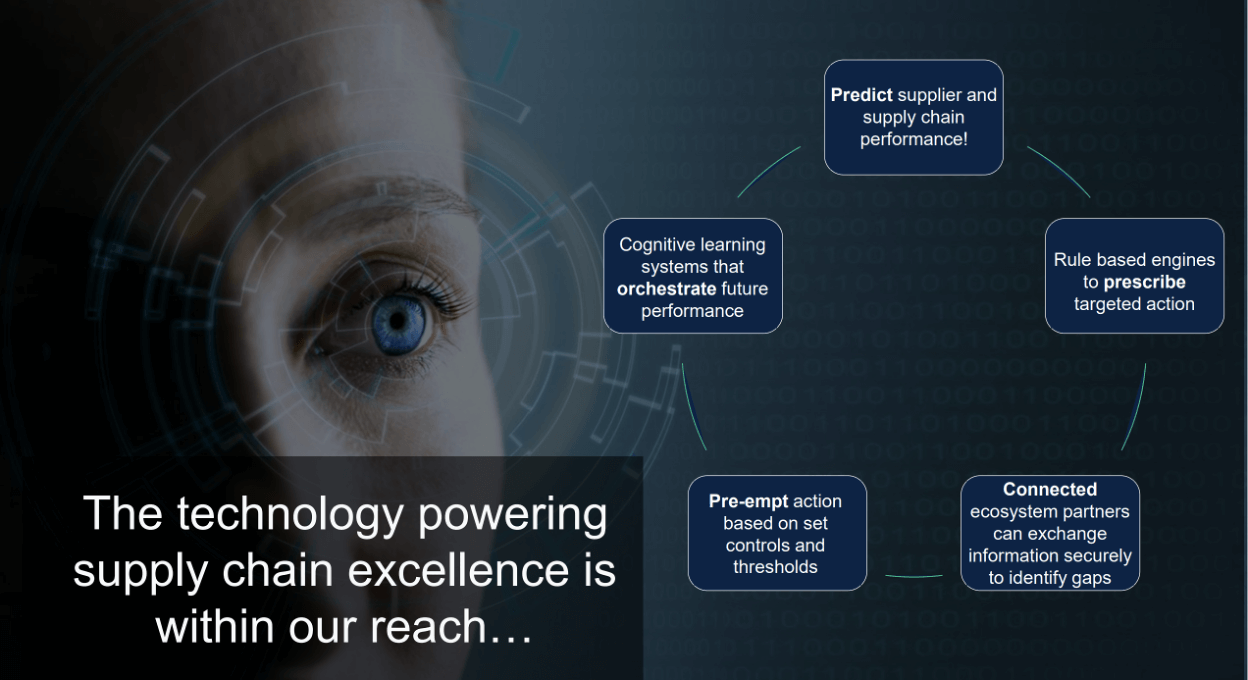
Figure 7: The technology powering supply chain excellence is within our reach. (Source Resilinc).
In closing, Day one of Innovation for a Transforming World gave semiconductor management much to think about. There was thought leadership advice on how to address the digital transformation, enhance the customer experience, gain trust in AI, move from fear to excitement in the workplace, and how to use data to improve supply chain strategy. Significant food for thought to chew on until the next SEMI event.
SEMI’s Innovation For a Transforming World is available on Demand until August 14, 2021. Register here.









